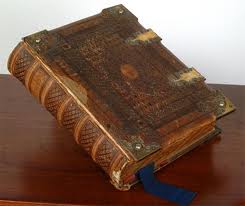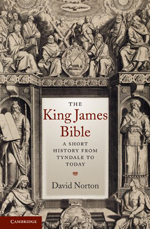
In his just released book The King James Bible: A Short History From Tyndale to Today, author David Norton mentions a startling discovery.
Long referred to as the 1611 King James Version, the most published book in human history may not have come off the printing press until early 1612. So, for those of us getting ready to celebrate the 400th birthday of this historic work, what day in 2011 should we celebrate?
How about the date when the manuscript was presented to King James? Or the date that Parliament officially accepted it?
“Sadly, we don’t know the answer to these questions,” says Norton. “If there are records of these things, they are yet to be found.”

It seems that 400 hundred years ago, nobody anticipated that the newly translated Bible would have such an impact on the world — or that it would be the standard text for millions of Christians for centuries. So, such details simply weren’t chronicled.
“I would not be surprised if more evidence relating to the making of the KJV turned up,” says Norton. “I have made some discoveries from manuscripts” — such as that the handwritten notes in the margins of a copy of the 1602 Bishops’ Bible preserved at the Bodleian Library at Oxford University “are close to, if not actually, the translators’ final manuscript of much of the Old Testament.”
“My few discoveries came about more through luck than comprehensive searching. I don’t think the well of discoveries is dry.”
For years, the King James Version has been called the “Authorized Version.” So, who authorized it? No written authorization has survived. The closest thing is a 1662 Act of Parliament authorizing the translation to be used in the Church of England’s Book of Common Prayer.
“‘Authorized Version’ became the common English name in the nineteenth century,” confirms Norton. “There is no record of official authorization by King, Parliament or Church.
“However, the statement on the original title-page, ‘appointed to be read in Churches’ means much the same as ‘authorized.’

Apparently in the sixteenth and seventeenth centuries the phrase, “authorized and appointed,” says Norton, “didn’t carry the weight we now give it. We could take ‘authorized’ in a loose but very real sense: the people authorized the Bible.
What was Norton attempting to do in his new book, The King James Bible: A Short History From Tyndale to Today, available from Cambridge University Press? The 218-page paperback is not light reading. It gives a thorough history of what it took to get the King James Version into print — no small task in the 1600s.
“What I wanted to do was to bring together work I had previously done and new work. Out of this I hoped to create an overview: how it came to be made, what it was in 1611, and how it grew after publication to be not just another Bible version but the greatest Bible in English.
“I thought of this as gestation, birth and growth. The gestation began with William Tyndale’s translations in the early sixteenth century: he wrote the first draft of half of the KJV.
“1611 saw the birth. But then there was a complex growth. It went from being one Bible among several to being the only Bible in the English-speaking world; more than just the centerpiece of the Protestant religion, it became a cultural treasure and one of the great influences on literature in English and on the language we now speak.
“I wrote for the serious general reader and, because there is previously unknown material in the book, for Bible scholars. I didn’t achieve all my ambitions, but my hope is that the reader will emerge with a real understanding of the KJV and of the business of translation. I also hope to have regained readers for the KJV: it remains a great translation.”
